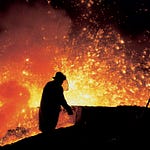While hydrogen fuel cells were once hyped for use in personal transportation, hydrogen is now being marketed as an energy panacea and a vital part of a 100% renewables grid. Most of the world's hydrogen is currently produced through steam methane reformation and is used as a very carbon-intensive feedstock for ammonia for fertilizer and other chemical industry applications. Decarbonizing this sector is already a monumental task. Green hydrogen produced by wind and solar-powered electrolysis is now being proposed as a solution to the problem of renewable intermittency. Is this viable? What are the challenges? I am joined by James Fleay, an Australian engineer and project manager who has worked in the power and oil and gas sectors. He has also been a solar industry investor and is the founder of DUNE, Down Under Nuclear Energy
Hydrogen Hope and/or Hype feat. James Fleay
Apr 14, 2021
Decouple
There are technologies that decouple human well-being from its ecological impacts. There are politics that enable these technologies. Join me as I interview world experts to uncover hope in this time of planetary crisis.
There are technologies that decouple human well-being from its ecological impacts. There are politics that enable these technologies. Join me as I interview world experts to uncover hope in this time of planetary crisis.Listen on
Substack App
Apple Podcasts
Spotify
YouTube
Pocket Casts
RSS Feed
Recent Episodes










